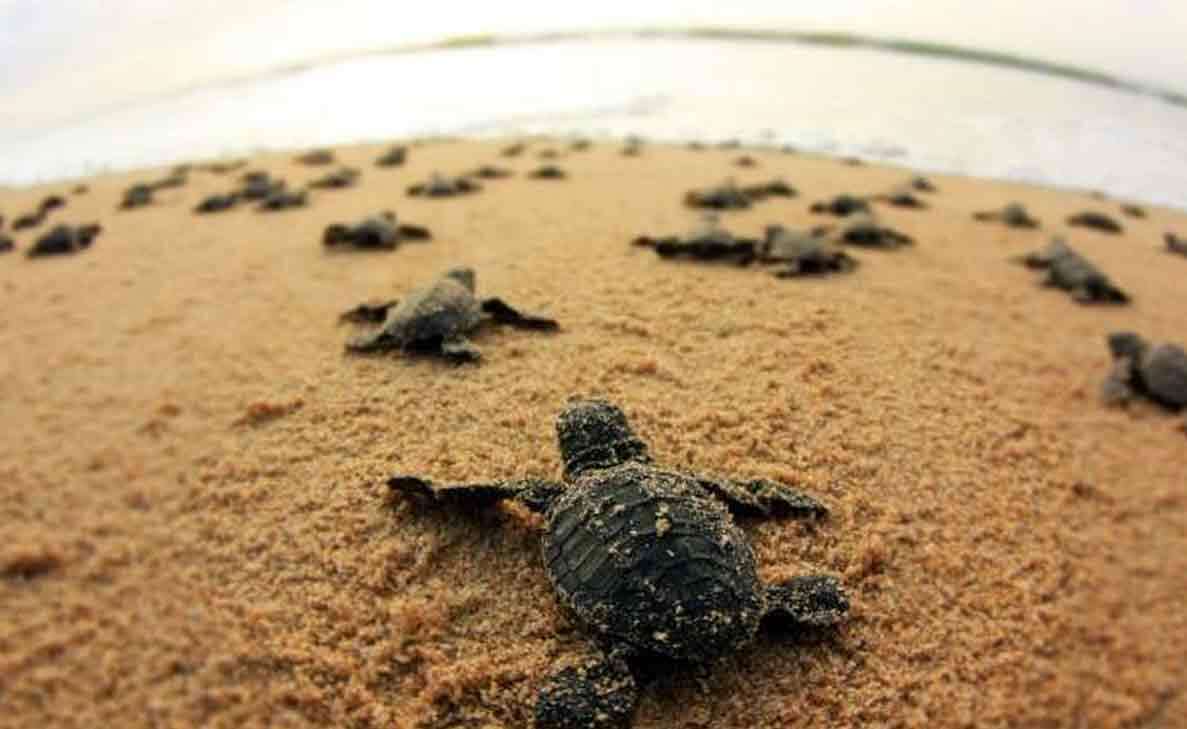

The presence of Olive Ridley Sea Turtles along the shores of Visakhapatnam is a phenomenon deeply rooted in the region’s geographical and environmental characteristics. Located along the eastern coast of India, Visakhapatnam boasts sandy beaches with sloping shores. This makes it an ideal nesting ground for these magnificent creatures. Since the early 1980s, female Olive Ridleys have been observed coming ashore to lay their eggs, contributing to the rich biodiversity of the region.
The nesting season for Olive Ridley turtles in Visakhapatnam typically spans from November to May. However, the peak nesting activity occurrs between February and March. During this period, visitors to the city’s beaches may witness the awe-inspiring sight of these turtles diligently burying their eggs in sand pits. This process is essential for the survival of their species. Olive Ridley turtles have been categorized as a ‘Vulnerable Species’ on the International Union for Conservation of Nature’s (IUCN) Red List. They are protected under Schedule I of the Indian Wildlife (Protection) Act, 1972 (amended 1991).
However, despite the natural splendour of Olive Ridley nesting events, recent reports highlight a concerning trend of dead turtles washing up on Visakhapatnam’s beaches. Environmentalists attribute these deaths to various factors, including trawling activities and pollution from industries. Trawling is a fishing method involving the dragging of large nets along the seabed. This poses a significant threat to marine life, including Olive Ridley turtles, as they often become entangled in fishing gear and suffocate.
Additionally, pollution from industrial sources further compounds the challenges faced by Olive Ridley turtles in Visakhapatnam. Chemical pollutants discharged into the marine environment can disrupt ecosystems. It can affect water quality, harming marine organisms, including sea turtles.
Conservation efforts in Visakhapatnam aim to address these threats and protect the Olive Ridley populations. Initiatives such as beach clean-ups, habitat protection, and public awareness campaigns play a crucial role in mitigating human-induced impacts on marine ecosystems. Furthermore, the involvement of local communities, government agencies, and non-governmental organizations is essential for their long-term conservation. According to the APFD (Andhra Pradesh Forest Department), all four hatcheries, with 21 guards, collected 46,754 eggs and released 37,630 hatchlings into the ocean in the last nesting season. Unfortunately, 5,655 eggs didn’t hatch.
Despite the challenges posed by human activities, the dedication of conservationists and the support of the community offer hope for the continued survival of Olive Ridley turtles in Visakhapatnam. By prioritizing the protection of nesting sites, implementing sustainable fishing practices, and reducing pollution, we can safeguard the future of these magnificent creatures and ensure that they continue to grace the shores of Visakhapatnam for generations to come.
Stay tuned to Yo! Vizag website and Instagram to know more about Vizag.
The search for new activities and experiences never ends. It's undoubtedly exciting to have one's…
The death of an 11-year-old girl near a church in Kancharapalem, Visakhapatnam, on the night…
Visakhapatnam district is set to see a major new development aimed at empowering the differently-abled…
A gruesome double murder in Rajeev Nagar, Ward 86, Visakhapatnam, was reported on 26 April…
For one born in Vizag or any Telugu city, there comes a time after primary…
As the weekend approaches, the yearning for rest and relaxation grows. With summer temperatures soaring,…
Leave a Comment